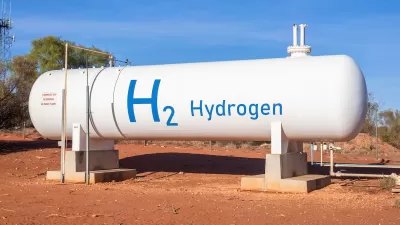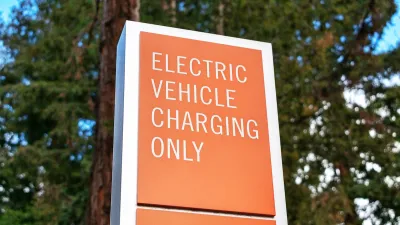The project will serve as an intermediary between clean hydrogen providers and consumers.

Two California cities are launching the country’s first hydrogen public utility, reports Emma Penrod in Smart Cities Dive.
Officials with First Public Hydrogen, or FPH2, which will serve the cities of Lancaster and Industry, say they hope to continue funding the project even without federal tax credits. “While there are challenges at the national level, we believe the combination of 45V incentives and state-level initiatives will drive the necessary growth in renewable energy and hydrogen production to achieve scale,” said Lancaster mayor Rex Perris.
“The hydrogen utility plans to serve as an aggregator between suppliers of hydrogen and would-be customers, including municipalities, other public utilities, transit agencies, and private sector companies in industries such as logistics, shipping and transportation,” according to the mayor.
“By acting as a public intermediary between buyers and sellers of hydrogen, FPH2 aims to make hydrogen more accessible, affordable and transparent, Parris said in an interview with Utility Dive.” The project plans to begin delivering hydrogen to customers by early 2026.
FULL STORY: California cities launch nation’s first public hydrogen utility

Alabama: Trump Terminates Settlements for Black Communities Harmed By Raw Sewage
Trump deemed the landmark civil rights agreement “illegal DEI and environmental justice policy.”

Planetizen Federal Action Tracker
A weekly monitor of how Trump’s orders and actions are impacting planners and planning in America.

The 120 Year Old Tiny Home Villages That Sheltered San Francisco’s Earthquake Refugees
More than a century ago, San Francisco mobilized to house thousands of residents displaced by the 1906 earthquake. Could their strategy offer a model for the present?

San Francisco Opens Park on Former Great Highway
The Sunset Dunes park’s grand opening attracted both fans and detractors.

Oregon Legislature to Consider Transit Funding Laws
One proposal would increase the state’s payroll tax by .08% to fund transit agencies and expand service.

Housing Vouchers as a Key Piece of Houston’s Housing Strategy
The Houston Housing Authority supports 19,000 households through the housing voucher program.
Urban Design for Planners 1: Software Tools
This six-course series explores essential urban design concepts using open source software and equips planners with the tools they need to participate fully in the urban design process.
Planning for Universal Design
Learn the tools for implementing Universal Design in planning regulations.
Clanton & Associates, Inc.
Jessamine County Fiscal Court
Institute for Housing and Urban Development Studies (IHS)
City of Grandview
Harvard GSD Executive Education
Toledo-Lucas County Plan Commissions
Salt Lake City
NYU Wagner Graduate School of Public Service





























